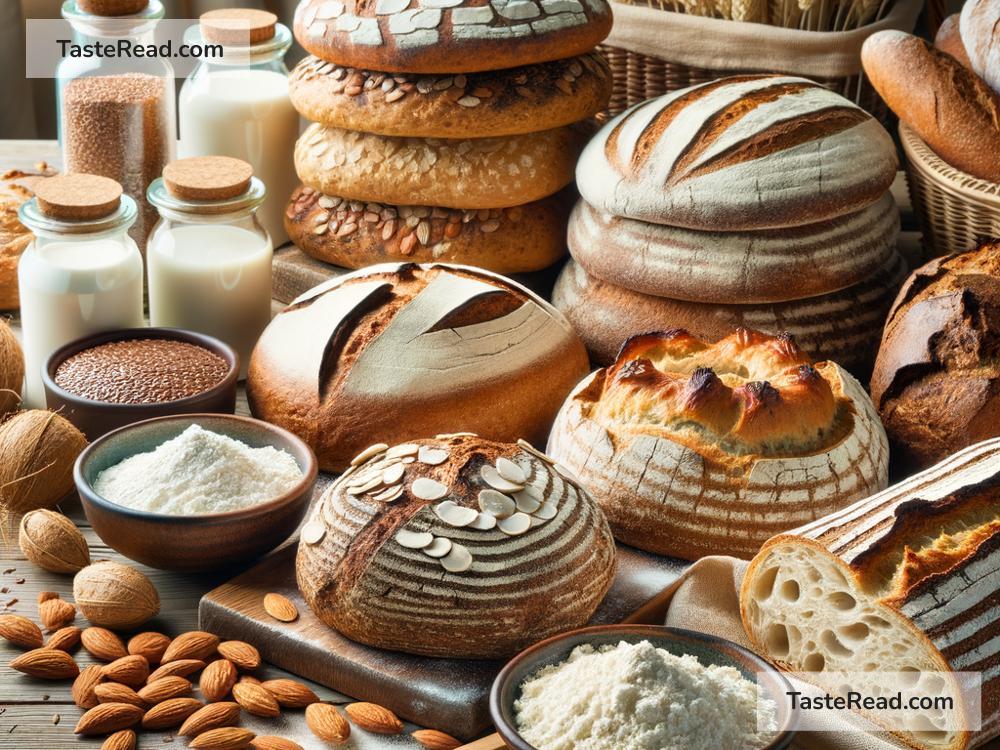Mastering the Art of Baking with Alternative Flours
Baking is like magic. It’s the art of turning simple ingredients into mouth-watering cakes, cookies, and bread. But, what happens when you want to explore beyond the realm of traditional wheat flour? That’s where alternative flours come into play. They not only offer a world of diverse flavors and textures but also cater to dietary restrictions, making baking inclusive for everyone. Mastering the art of baking with these flours can open up a universe of delicious possibilities. Let’s dive into how you can become a pro at using alternative flours in your baking adventures.
Understanding Alternative Flours
Before we start baking, it’s important to know what alternative flours are. Simply put, these are flours made from grains, nuts, seeds, or other plant-based sources that are not wheat. Examples include almond flour, coconut flour, rice flour, and oat flour, among others. They are loved by many for their nutritional benefits and are a boon for those intolerant to gluten.
Why Use Alternative Flours?
- Nutritional Value: Many alternative flours are richer in vitamins, minerals, and fiber compared to traditional wheat flour.
- Gluten-Free Baking: They are a game-changer for those with gluten sensitivities or celiac disease, offering a way to enjoy baked goods safely.
- Flavor Diversity: Each flour brings its unique taste, which can enhance the flavor profile of your baked items.
- Experimentation: Using alternative flours can be fun. It’s a creative process that encourages experimentation and innovation in the kitchen.
Tips for Baking with Alternative Flours
Understand the Flour
Each alternative flour has its characteristics. Some, like coconut flour, are highly absorbent and require more liquid. Others, such as almond flour, can make your baked goods more moist and dense. Spend time getting to know each flour’s behavior by starting with simple recipes.
Begin with Blends
If you’re new to the world of alternative flours, consider using pre-made flour blends. Many brands offer gluten-free mixes designed to substitute wheat flour one-for-one. This can be a great starting point and reduce the guesswork in your early attempts.
Experiment with Ratios
There’s no universal rule for substituting traditional flour with an alternative one. It often requires some trial and error. A good rule of thumb is to start experimenting by replacing only a part of wheat flour with an alternative flour and gradually adjusting based on the results.
Keep An Eye on Moisture
Alternative flours can dramatically change the moisture content of your batter or dough. Be prepared to adjust the amounts of liquid or dry ingredients to achieve the right consistency.
Don’t Skip the Binder
Since most alternative flours lack gluten, which acts as a binding agent in traditional baking, recipes might require a substitute to help hold the structure. Ingredients like xanthan gum, eggs, or even flaxseed meal can serve this purpose.
Favorite Flours to Start With
Almond Flour
Rich in protein and low in carbohydrates, almond flour is ideal for moist, dense cakes and cookies. It can also be used for breading in place of breadcrumbs.
Coconut Flour
Highly absorbent and gluten-free, coconut flour is great for adding a light coconut flavor to baked goods. Remember, you will need more eggs or liquid to balance its dryness.
Oat Flour
Easily made at home by grinding oats, oat flour adds a natural sweetness and chewy texture, perfect for cookies and pancakes.
Conclusion: Embrace the Experiment
Mastering the art of baking with alternative flours is a journey filled with experimentation and learning. The key is not to be afraid of failures. Each trial brings you closer to understanding how these unique ingredients behave and how you can manipulate them to suit your needs. Whether you’re baking for health reasons, dietary preferences, or just to explore new flavors and textures, alternative flours can enhance your baking repertoire in exciting ways. So, grab your apron, pick an alternative flour, and let the adventure begin. Happy baking!


